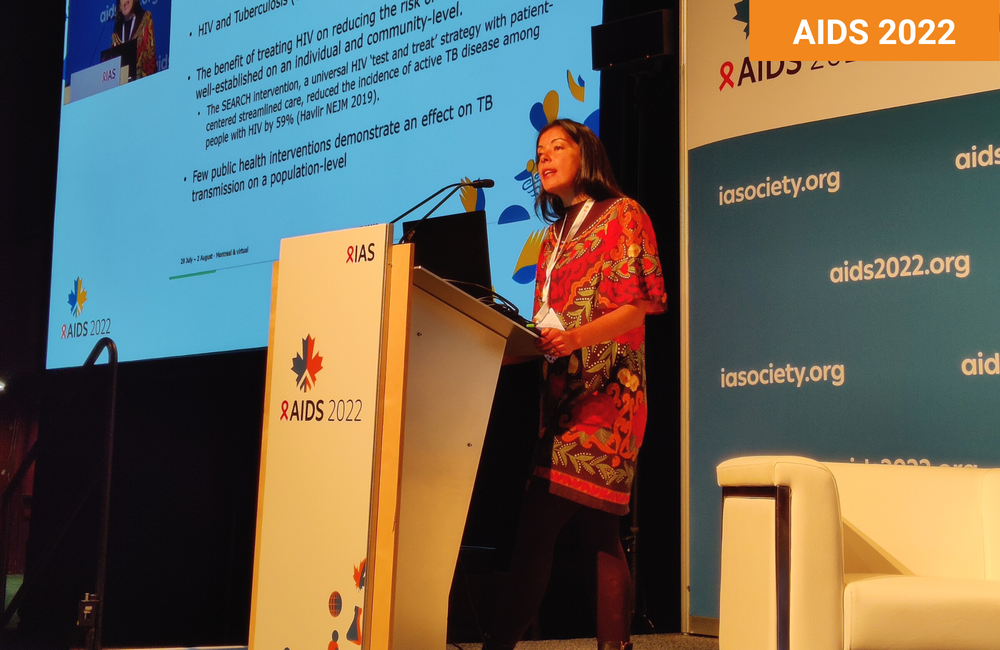
A large campaign in Uganda to ramp up HIV testing and immediate HIV treatment reduced the incidence of tuberculosis (TB) in the intervention communities by 27% after one year, underlining the potential impact of HIV-related investments on wider population health, investigators of the SEARCH study reported at the 24th International AIDS Conference (AIDS 2022) on Sunday.
The SEARCH study is one of the largest implementation studies of universal HIV test-and-treat to be conducted. The study randomised communities to receive either the intervention or standard of care according to national guidelines and took place between 2013 and 2016 in rural communities in Uganda and Kenya. The intervention consisted of:
- A multi-disease prevention campaign that included testing for HIV, diabetes and hypertension, with a two-week health fair and household testing in each community.
- Linkage to care of anyone who tested positive
- Immediate antiretroviral therapy (ART), regardless of CD4 count.
Results from the SEARCH study have been presented at several major conferences and demonstrate substantial impact of the intervention, including:
- Very high rates of HIV testing and viral suppression
- Faster and greater uptake of antiretroviral treatment in the intervention communities, together with reduced mortality
- A reduction in the incidence of active tuberculosis (TB)
- A reduction in HIV infections in infants.
At AIDS 2022, Dr Carina Marquez of the University of California San Francisco presented results of an analysis of TB incidence in nine communities that participated in the SEARCH study in Uganda, where TB symptom screening was a component of the intervention.
The study aimed to sample 100 households that included at least one person with HIV and 100 households without a person with HIV in each community. Tuberculin skin tests were carried out with each household member over the age of 5 at baseline and one year later.
The study measured the incidence of TB after one year by looking at conversion from negative to positive tuberculin skin test (TST), indicating likely recent exposure to TB in the community.
The study sampled 1435 households in nine communities, testing 4884 people at baseline (58% of those eligible to participate). Those tested were predominantly under 18 (58% in the intervention communities), 46% lived in a household with a person with HIV, 10% were living with HIV and over 90% had received the BCG vaccination to protect against TB.
Twenty-two per cent tested positive at baseline, leaving 3381 people in the TST-negative cohort at baseline. One year later, 78% of the TST-negative cohort were available for re-testing.
After one year, the incidence of TB was 27% lower in intervention communities. Sixteen per cent of participants in intervention communities tested positive for TB after one year compared to 22% in control group communities. The reduction in risk was significant in children aged 5-11 years (aRR 0.71, 95% CI 0.52-0.97, p = 0.016) but not in participants aged 12 and over (aRR 0.84, 95% CI 0.64-1.11, p = 0.106). This result is probably explained by the fact that adolescents and adults were more likely to have been exposed to TB previously, Carina Marquez said.
She told the conference that reduced TB incidence is likely to be a consequence of several factors. As well as a reduction in the duration of infectiousness due to improved detection and treatment of active TB through symptom screening, susceptibility to the activation of latent TB or progression to active TB is likely to be reduced due to improved immune status in people on antiretroviral treatment. This leads to a reduction in the number of people with active TB in the community.
Marquez C et al. Impact of a community-wide HIV test and treat intervention on population-level tuberculosis transmission in rural Uganda. 24th International AIDS Conference, Montreal, abstract OAB0403, 2022.
